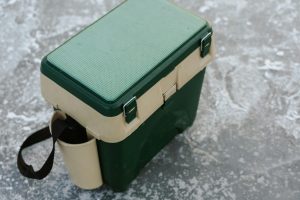A guide to dressing for different climate zones and weather
When it comes to dressing for different climates and weather, it can be a bit of a challenge to find the perfect balance between style and practicality. Whether you’re traveling to a new destination or simply trying to adapt to the ever-changing weather in your city, understanding how to dress for different climate zones is essential. From packing for a tropical vacation to preparing for a cold winter, having a guide to dressing for different climate zones and weather can make all the difference in keeping you comfortable and stylish no matter where you are.
Understanding Climate Zones
Before we dive into how to dress for different climate zones, it’s important to understand the basics of climate zones. Climate zones are areas of the world that have similar weather patterns and temperatures. These zones are typically divided based on factors such as temperature, humidity, and precipitation. There are five major climate zones: tropical, dry, temperate, continental, and polar.
Tropical
Tropical climate zones are typically found near the equator and have a hot and humid climate year-round. The temperatures in these zones rarely drop below 64°F and can reach up to 100°F. When traveling to a tropical climate, be prepared for plenty of sunshine, high humidity, and occasional rain showers. Light, breathable fabrics that can wick away moisture are essential in these zones.
Dry
The dry climate zone is characterized by low humidity and hot temperatures. These zones typically have desert or arid climates, with little to no rainfall throughout the year. The temperature can vary greatly from day to night, so it’s important to pack clothing that will keep you cool during the day and warm at night. Loose-fitting, lightweight clothing made from natural fabrics such as cotton or linen are ideal for dry climate zones.
Temperate
The temperate climate zone is known for its mild and comfortable weather. These zones have four distinct seasons and moderate temperatures year-round. The summer months can be warm, while the winter months can be cold, but rarely extreme. When dressing for a temperate climate, it’s important to plan for the weather changes throughout the day. Layering is key to staying comfortable in this climate zone.
Continental
Continental climate zones have a wide range of temperatures and weather conditions. These zones are typically found in the middle latitudes and can experience hot summers and cold winters. Unlike temperate zones, the temperature in continental zones can vary greatly from day to night. When traveling to a continental climate, be sure to pack a variety of clothing options to accommodate the changing weather.
Polar
The polar climate zone is known for its extreme cold temperatures. These zones have long, dark winters with little to no daylight and short, cool summers. When dressing for a polar climate, it’s crucial to have proper winter gear such as warm, insulated jackets, boots, and hats.
Adapting to Different Weather Conditions
Once you’ve determined the climate zone you will be traveling to, it’s important to also consider the weather conditions. Weather can vary greatly within a single climate zone, so it’s important to be prepared for any surprises. Here are some tips on how to dress for different weather conditions:
Sunny and Warm
Warm and sunny weather calls for light, breathable clothing. Opt for loose-fitting tops and bottoms made from natural fabrics such as cotton or linen. These fabrics will help keep you cool in the heat and allow your skin to breathe. Don’t forget to protect your skin from the sun with a hat and sunscreen.
Rainy and Humid
If you’re traveling to a tropical or humid climate, chances are you may encounter some rain showers. Be prepared with lightweight, waterproof clothing that can easily be packed in your bag. A rain jacket or poncho, along with waterproof shoes, will keep you dry and comfortable in the rain.
Cold and Windy
When dressing for cold and windy weather, layers are key. Start with a base layer of moisture-wicking fabric, such as silk or polyester, followed by a warm middle layer, such as a sweater or fleece jacket. A windbreaker or heavy coat made from a wind-resistant material will help keep out the cold air.
Snowy and Freezing
In extreme cold weather conditions, it’s important to have proper winter gear. A warm, insulated coat, along with thick gloves, a hat, and waterproof boots are essential for staying warm and dry. Layering is also important, so be sure to pack thermal undergarments and thick wool socks.
Final Tips for Dressing for Different Climates
Here are a few final tips to keep in mind when dressing for different climates:
Invest in Quality Clothing
When traveling to different climate zones, it’s important to invest in high-quality clothing that will last and provide both style and function. Look for fabrics that are light, breathable, and can easily be layered.
Consider Cultural Dress Codes
Before traveling to a new destination, be sure to research the cultural dress codes. Some countries may have certain guidelines or restrictions on what is considered appropriate clothing.
Be Prepared with Accessories
In addition to clothing, accessories can also play a big role in dressing for different climates. Items such as scarves, hats, socks, and sunglasses can help protect you from the elements and add a touch of style to your outfit.
With this guide to dressing for different climate zones and weather, you can confidently pack for your next trip, knowing that you’ll be prepared for any weather conditions. Remember to always check the weather forecast before traveling and pack based on the climate and weather conditions of your destination. Happy travels!










